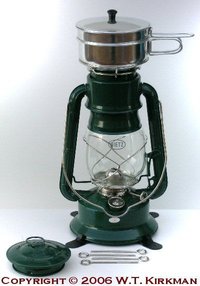Many Hess stations have a Kero pump, so it may be less than Blowes. IIRC, there's a locator on the Hess website.
If you're going to be using it for lighting, do a trial run, to see the light level you'll get, is it enough, and how much fuel you'll use per hour. Different lamps have different rates of consumption.
When Irene came through, we had the first night kero only (and I have some nice, old large-wick lamps) and the general consensus was that we wanted more light for "work". The second night, we went to a combo of wick-type kero and coleman mantle lamps. I was simultaneously using propane (kitchen lamp); Coleman fuel (2 lanterns in the main rooms of the house); kero (3/4 inch wick lamp to light the hallway, upstairs); and wax (votive in the bathroom). Add in a flashlight for the kids.
I, personally, thought the old-school was acceptable, but MsHappy was of another opinion.
This is one thing that I think many people who prep screw up on - not running a drill. When I say, "Do a trial run of the lamps", I mean NO electricity use - no TV, light in the kitchen from the oven, no swithching on the light over the medicine cabinet to brush your pearly whites.
I'll never hold myself out as a prepper - I'm more of the "Long pig keep well on the hoof" school, and will invite the neighbors over for dinner when it's TEOTWAWKI time, but the 4 days without power last year were a good trial run for the "collectibles" I have kicking around.
The other consideration is that your eyes adapt - one big glass votive candle in a strategic location illuminated the entire main floor of my house, and the stairs down to it, so I could let the dog out. Not bright, but more than enough to avoid stepping on a cat, or tripping over something.
Every house is different, and sight lines, etc., are important - testing before you need it is vital.




![Wink [wink] [wink]](/xen/styles/default/xenforo/smilies.vb/002.gif)
![Cheers [cheers] [cheers]](/xen/styles/default/xenforo/smilies.vb/018.gif)
![Thumbs Up [thumbsup] [thumbsup]](/xen/styles/default/xenforo/smilies.vb/044.gif)
![ROFL [rofl] [rofl]](/xen/styles/default/xenforo/smilies.vb/013.gif)